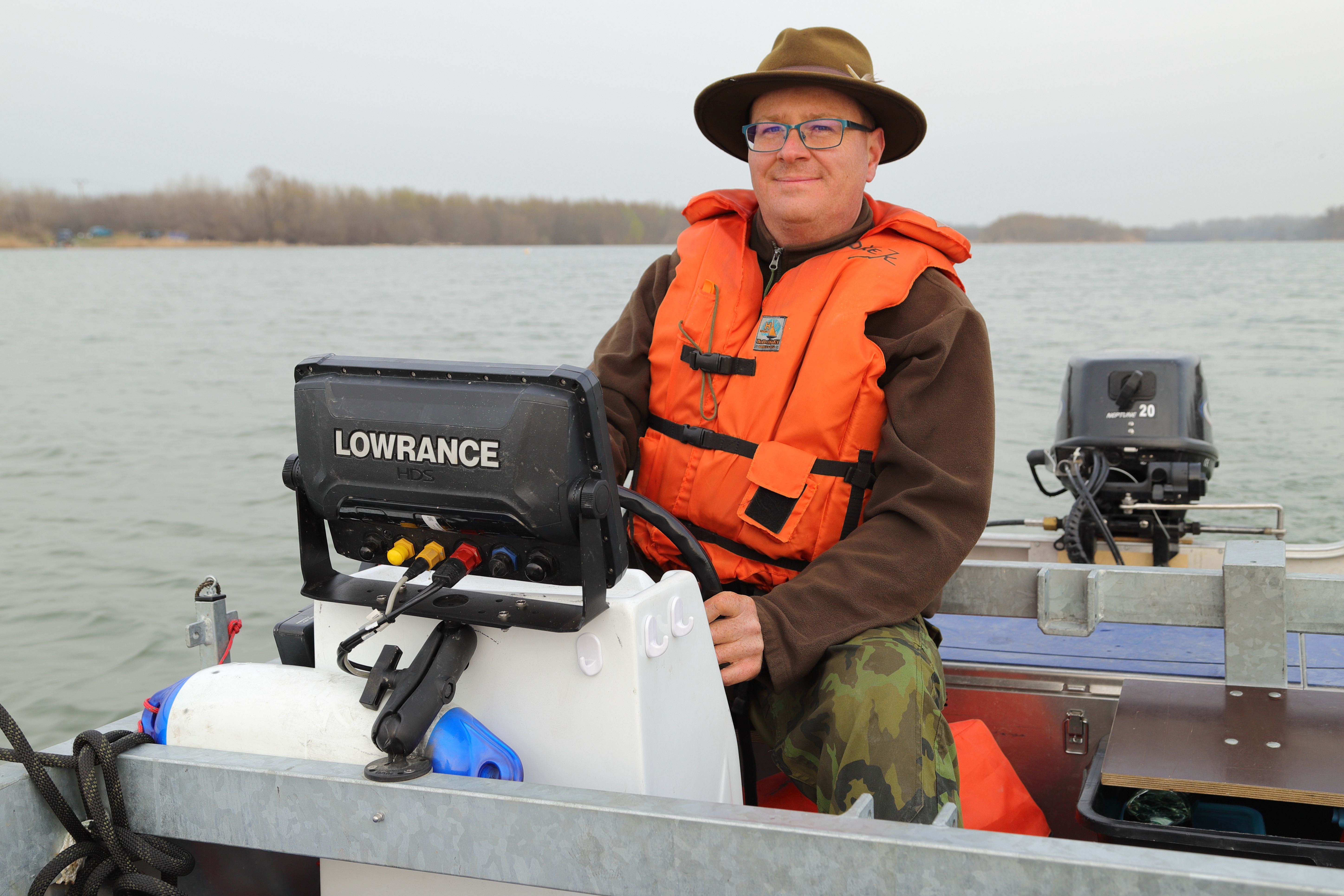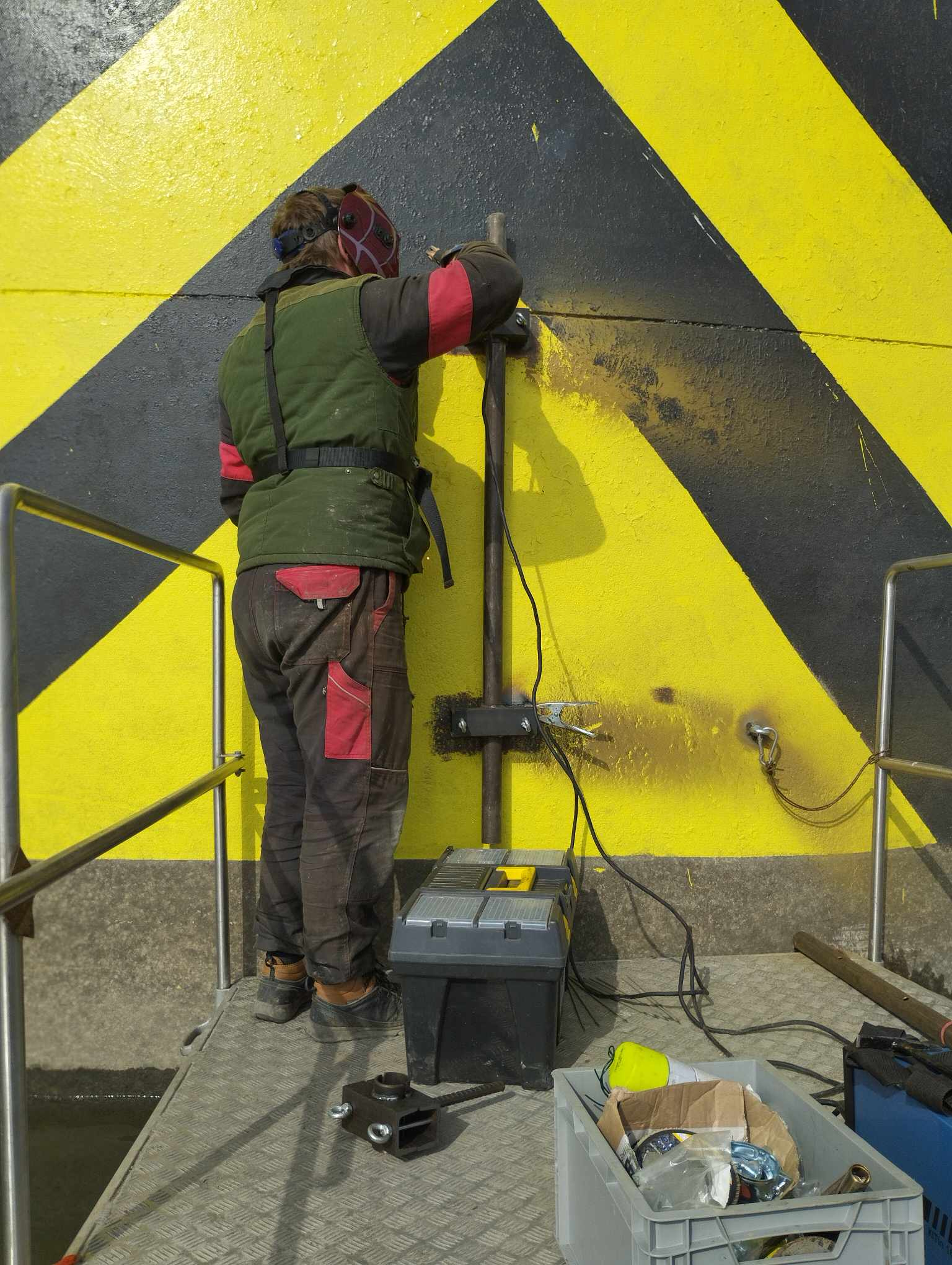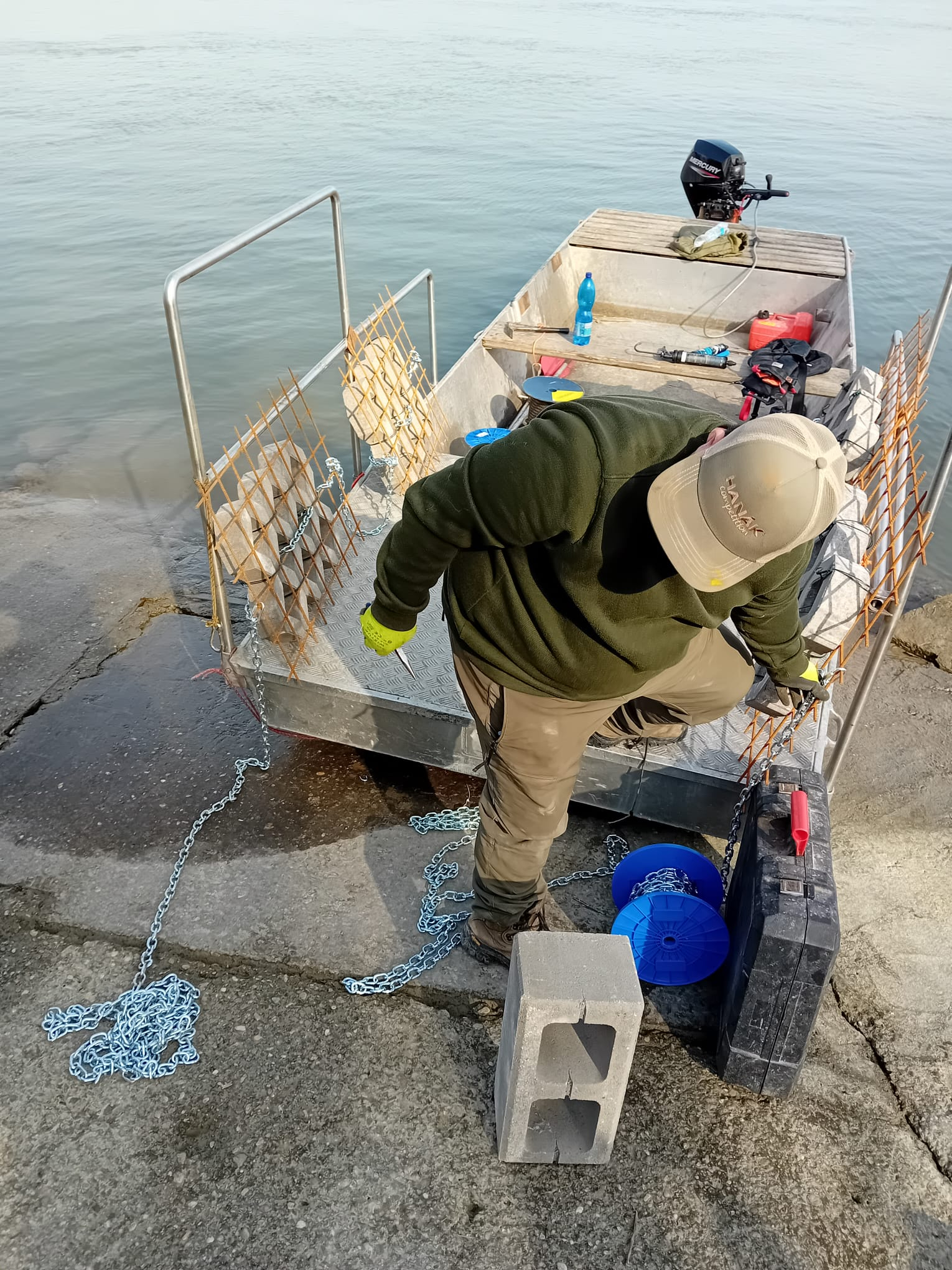During the period of June 16th-27th,2025, Dr. Jan Urban visited the Nofima aquaculture research station in Sunndalsøra, Norway, as part of TNA Aquaexcel 3.0. The aim of the project access is to quantify the impact of fasting on the behavior and fin damage of young Atlantic salmon and rainbow trout and to classify these effects using artificial intelligence.
- Fotogalerie:
- Foto:

- Foto:

- Foto:

- Foto:

- Foto:

- Foto:

Excursion with Master's students, Czech Republic - Poland - Slovakia 4 to 8 November 2024
From 4th to 8th November 2024, a five-day excursion of 1st year students of the follow-up Master's degree within the subjects "Salmonid fish farming" and "Pond Aquaculture" took place. A total of 15 different facilities, farms, organisations and places in the Czech Republic, Poland and Slovakia were visited. These included various types of facilities, mainly fish hatcheries, flow-through and recirculation farms with rearing of hatchery and/or marketable salmonids, sturgeons, research organisations, cage farms, fish farms, aquaculture facilities, fish processing plants, fish and fish products, etc. The programme also included a fish specialities tasting.
The excursion was realized thanks to the financial support of IAPW and RIFCH resources for teaching. We hereby thank the faculty management for their support!
Prof. Ing. Jan Kouřil, Ph.D., Ing. Ján Regenda, Ph.D. and Ing. Pavel Lepič, Ph.D.
Photo by:Ing. Ján Regenda, Ph.D.
- Fotogalerie:
- Foto:
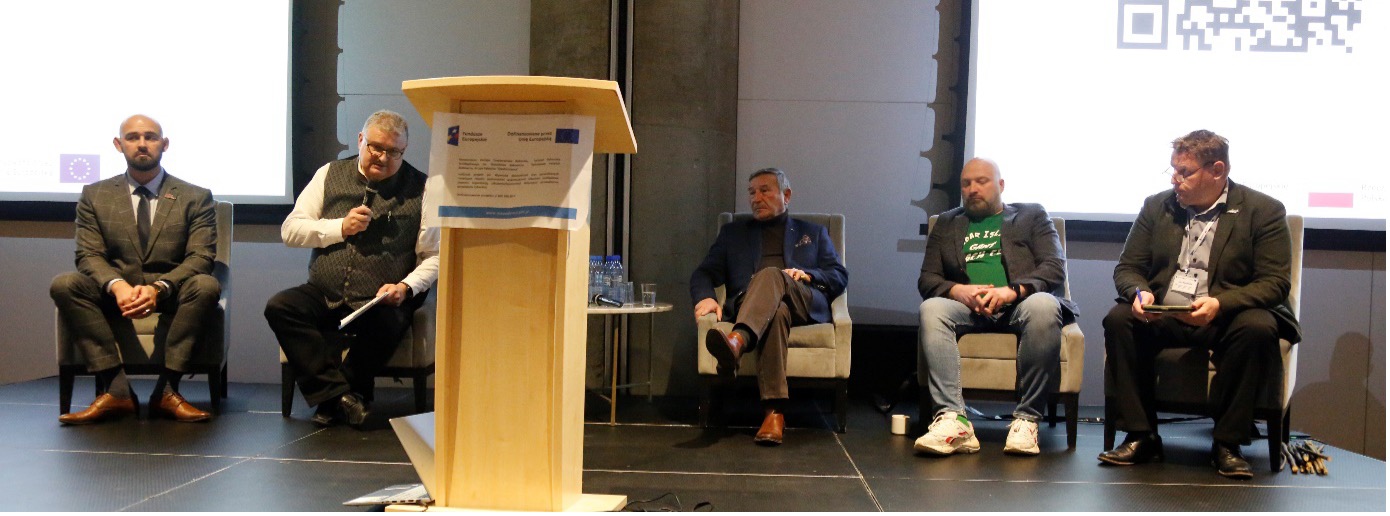
Participation in the 30th Carp Conference in Janów Podlaski, Poland, 26-28 February 2025
From 24th February to 1st March 2025 I attended the 30th Polish Carp Conference, which took place in Janów Podlaski during the last three days of February (26-28 February 2025). The conference was attended by over 240 people. In total, more than 16 presentations were given on various topics that have been vexing Polish fish farmers. The programme also included three discussion panels combined with an interactive online poll for conference participants. The panel topics were: the fish market in Poland, the unification of professional organizations of Polish fishermen, and the cooperation between fishery science and fishery operations.
The conference also included a photo competition with a fishing theme and a gastronomic competition focusing on the preparation of various fish dishes. As a foreign guest, I had the honour to sit on the evaluation panel of the gastronomic competition. I presented three different papers at the conference and participated in the discussion. In the first shorter paper I presented the situation regarding fish production in the Czech Republic and fish export to Poland in the last few years. On the second day, I participated in a panel discussion on the unification of professional organisations with a paper describing the way fishermen are represented in the Czech Republic (Fishermen's Association of the Czech Republic). I ended my contribution with a demonstration of the story of King Svatopluk and his three rods, which captivated the audience. On Friday, I gave my keynote speech on "Cormorant in our neighbours' ponds" describing the great damage caused by cormorants to fish. The final paper evoked great emotion from the audience.
In September 2024, Paride Balzani, Ismael Soto and Filip Ložek attended the 13th International Conference on Biological Invasions (NeoBiota) in Lisbon (Portugal).
During the conference, Ismael Soto co-lead the workshop „Bridging the Lexical divide: unifying terminology for biological invasions“, Paride Balzani presented one poster („Assessing the role of non-native species and artificial water bodies on the trophic and functional niche of mediterranean freshwater fish communities“) and two oral communications („Seasonal variability in the trophic ecology of three co-occurring invasive crayfish at a thermal locality“ and „Potential distribution, observed impacts, and invasion risk of two non-native snapping turtles, Chelydra serpentina and Macrochelys temminckii“), and Filip Ložek presented one oral communication („Overlooked biodiversity losses: the fate of European crayfish ectosymbionts amidst the invasion of signal crayfish“).
In the framework of the Erasmus+ mobility funding programme, I participated in several training activities on Feed Quality and Seafood at the Interdisciplinary Centre for Marine and Environmental Research at the University of Porto, Portugal from 23rd–27th September 2024. My participation included receiving training on experimental facilities for seabass and seabream, as well as involvement in digestibility trials, which encompassed feeding, collection of uneaten feed, and the gathering of fish feces. In addition, I conducted biochemical analyses on seabream serum and performed sample collections of fish blood and brain tissues for further research on fish appetite. Moreover, I delivered a seminar on the use of insects as feed.
Dr. Franek actively participated in the 20th International Congress of Developmental Biology, held in San Juan, Puerto Rico, on June 18-22. At the conference I gave a talk on "Life history shapes germline development in vertebrates" in the session "Relationship between development and aging". Attending this well-established conference was a unique opportunity to gain insight into the field of animal developmental biology, discuss my own results, and make valuable contacts.
The conference was organized in collaboration with three major professional societies: the International Society of Developmental Biology, the Society for Developmental Biology and the Latin American Society for Developmental Biology. The program covered a wide range of topics in developmental biology, including plenary lectures on topics such as transcriptional and epigenetic regulation of development, regenerative systems, evolution and development of organ systems, morphogenetic influences on development, cell signaling, and the origin of evolutionary novelties.
The programme also included opportunities to establish international collaborations, share experiences and receive feedback from leading experts from around the world. Participation in this conference contributed not only to broaden professional knowledge, but also to strengthen professional contacts and inspire further research work in the field of developmental biology.
The 19th International Conference on Chemistry and the Environment took place in Belgrade, Serbia, from 8 to 12 June 2025. Pavla Fialová participated in the conference with an oral presentation titled Temporal Evolution of Chemical Space Sampled by Passive Samplers in Wastewater Effluent Using Nontargeted Analysis and Chemical Space Modeling. The event also provided a valuable opportunity to exchange the latest insights in environmental chemistry and to establish new professional connections.
On October 20th–29th, 2024, FFPW USB staff (Bořek Drozd, Filip Ložek, Pavel Staněk, Martin Šindler) together with students of the faculty, employees of the Slovak Angling Union and members of the Slovak Fishing Club caught and tagged 3 rheophilic fish species for a telemetry study aimed at determining the current migratory passability of Slovak - Hungarian parts of the Danube for fish. The target fish species are: sterlet (Acipenser ruthenus) as the flagship fish species of the Danube basin, as well as barbel (Barbus barbus) and asp (Leuciscus aspius). The activity took place within the framework of fulfilling the goals of the integrated project LIFE Living Rivers (101069837/LIFE21-IPE-SK-Living Rivers).
RNDr. Bořek Drozd, Ph.D.
On September 10-11, 2024, FFPW USB staff (Bořek Drozd, Martin Šindler) performed adjustment and service of the telemetry gates installed on water structures and in free-flowing passages in the Slovak-Hungarian part of the Danube in order to determine the migration activity of the sterlet (Acipenser ruthenus) in the project area of the integrated LIFE project Living Rivers (101069837/LIFE21-IPE-SK-Living Rivers).
Written by: RNDr. Bořek Drozd, Ph.D.
Chemical pollution in the Danube River basin was monitored using passive samplers within the LIFE "Living Rivers" framework 101069837. The samplers were located in the six watercourses from 28.-30.5. until 11.-13.6. Periodic analyses of micropollutants, such as pharmaceuticals, pesticides, and technical substances, lead to obtaining information on the concentration and composition of foreign substances in waters, revealing their sources and possible steps to improve the situation and water environment protection.
On February 25-29, 2024, FFPW USB staff (Bořek Drozd, Jan Kubec, Lukáš Veselý, Filip Ložek, Martin Vlk) carried out the second phase of installing telemetry gates to monitor the movement of rheophilic fish species in the Slovak part of the Danube in the project area of the LIFE Living Rivers project (101069837/LIFE21-IPE-SK-Living Rivers).
RNDr. Bořek Drozd, Ph.D.
On January 6-10, 2025, the staff of the FFPW USB (Bořek Drozd, Filip Ložek, Lukáš Veselý, Jan Kubec, Martin Vlk, Filip Kupka, Pavel Staněk, Daniel Kvapil) downloaded data from telemetric gates installed on water structures and in free-flowing passages in the Slovak-Hungarian part of the Danube in order to determine the migratory activity of the sterlet (Acipenser ruthenus), asp (Leuciscus aspius) and barb (Barbus barbus) in the project area of the integrated LIFE project Living Rivers (101069837/LIFE21-IPE-SK-Living Rivers). In addition, new telemetric gates were installed, and maintenance, service and repair of the installed telemetric equipment were performed.
Written by: RNDr. Bořek Drozd, Ph.D.
On August 26-29, 2024, FFPW USB staff (Bořek Drozd, Jan Kubec, Martin Vlk) performed dowmloading of data from telemetry gates installed on water structures and in free-flowing passages in the Slovak-Hungarian part of the Danube in order to determine the migration activity of the sterlet (Acipenser ruthenus) in the project area of the integrated LIFE project Living Rivers (101069837/LIFE21-IPE-SK-Living Rivers). Furthermore, maintenance, service and repair of the installed telemetry equipment was carried out.
Written by: RNDr. Bořek Drozd, Ph.D.
On 11th March 2025, FFPW USB staff (Bořek Drozd, Filip Ložek, Martin Šindler) checked telemetry gates installed on water structures and free-flowing passages in the Slovak-Hungarian part of the Danube River in the project area of the integrated LIFE project Living Rivers (101069837/LIFE21-IPE-SK-Living Rivers). Furthermore, a new method for collecting fish larvae using passive ichthyoplankton nets was calibrated.
Written by: RNDr. Bořek Drozd, Ph.D.
Eradication of the first red swamp crayfish population in Slovakia
Four members of the Faculty of Fisheries and Protection of Water USB (Antonín Kouba, Augusto Frederico Huber, Jakub Kocour, and Alex Pavlinců) participated in a targeted eradication program against the first known population of the highly invasive red swamp crayfish in Slovakia (discovered in May 2023). Its population occurs in the upper stretch of the Čepčínský brook located near Turčianské Teplice. The main eradication campaign that happened on September 11 combined several approaches and resulted in more than 4,600 individuals eliminated. More details about the invaded site can be found in our recently publishedarticle.
From 6th to 8th November 2024, a meeting of limnologists took place at the Water Research Institute in Bratislava as part of a course on identification of stonefly larvae. The course was led by Dr. Matej Žiak and supplemented with comments from other participants. The introductory lecture was about the distribution, conservation, and ecology of stoneflies in Slovakia and the Czech Republic. In the subsequent sessions, participants were thoroughly introduced to the new identification key for larvae of Slovakia. The course concluded with the identification of participants' own material.
FFPW USB CENAKVA actively participates in the international monitoring of the Danube - The Joint Danube Survey 5 (JDS5)
FFPW USB CENAKVA is an active member of a broad international consortium (14 countries) that cooperates in one of the world's most extensive water environment monitoring programs - The Joint Danube Survey 5 (JDS5), which is focused on comprehensive monitoring of the Danube and its major tributaries. In the period May 24th -30th. 2025, our sampling team, consisting of T. Randák, R. Grabic (FFPW JU CENAKVA), and B. Vrana (MU Brno RECETOX), successfully installed passive samplers at 8 locations in the middle and lower reaches of the Danube. During our seven-day trip, we covered 3700 km, visited seven countries, and experienced many interesting situations.
- Fotogalerie:
- Foto:
 , Text k fotce:
Prohlídka rybí farmy Biely Potok, Slovryb, a.s. – opatření k zlepšení welfare ryb při nedostatku vody v letních měsících
, Text k fotce:
Prohlídka rybí farmy Biely Potok, Slovryb, a.s. – opatření k zlepšení welfare ryb při nedostatku vody v letních měsících - Foto:
 , Text k fotce:
Zemní rybník s generačním hejnem lipanů, SRZ Rada, o.z. – středisko Svit
, Text k fotce:
Zemní rybník s generačním hejnem lipanů, SRZ Rada, o.z. – středisko Svit - Foto:
 , Text k fotce:
Moderní semirecirkulační objekt s chovem pstruha duhového, SRZ Rada, o.z. – středisko Svit
, Text k fotce:
Moderní semirecirkulační objekt s chovem pstruha duhového, SRZ Rada, o.z. – středisko Svit - Foto:
 , Text k fotce:
Zařízení na výrobu kyslíku ze vzduchu k oxigenaci nádrží s rybami. Jedná se o nízkotlaký systém (10 l O2/min.) s nízkou spotřebou elektrické energie.
, Text k fotce:
Zařízení na výrobu kyslíku ze vzduchu k oxigenaci nádrží s rybami. Jedná se o nízkotlaký systém (10 l O2/min.) s nízkou spotřebou elektrické energie. - Foto:
 , Text k fotce:
Rybí líheň MO SRZ Martin, kde se vytírá nejstarší chovné hejno hlavatky podunajské na Slovensku
, Text k fotce:
Rybí líheň MO SRZ Martin, kde se vytírá nejstarší chovné hejno hlavatky podunajské na Slovensku - Foto:
 , Text k fotce:
Rybník „hruška“ původně určený k odchovu generačních hlavatek podunajských na farmě Príbovce, dnes slouží k odchovu reofilních druhů ryb a lipanů, SRZ Rada, o.z.
, Text k fotce:
Rybník „hruška“ původně určený k odchovu generačních hlavatek podunajských na farmě Príbovce, dnes slouží k odchovu reofilních druhů ryb a lipanů, SRZ Rada, o.z. - Foto:
 , Text k fotce:
Farma fy. Petra Aqua s chovem akvarijních ryb v Turčianských Tepliciach
, Text k fotce:
Farma fy. Petra Aqua s chovem akvarijních ryb v Turčianských Tepliciach - Foto:
From 22nd to 24th January 2025, we participated (Regenda, Like, Niksirat) in a working trip to Slovakia in the framework of which the conclusions of the project BYCZ-SPF00088 Fish Welfare Education – Knowledge Transfer and Innovation in Fisheries Science, which is supported by the Small Project Fund of the Interreg Bavaria-Czech Republic Programme, were presented. The workshop programme focused on the demonstration of different fish farming technologies within Slovak aquaculture and the possibilities of addressing fish welfare issues. The event's partners from the Czech Republic, Germany, and Slovakia shared their experiences with fish welfare issues. A total of eight different fish farms were visited.

- Fotogalerie:
- Foto:
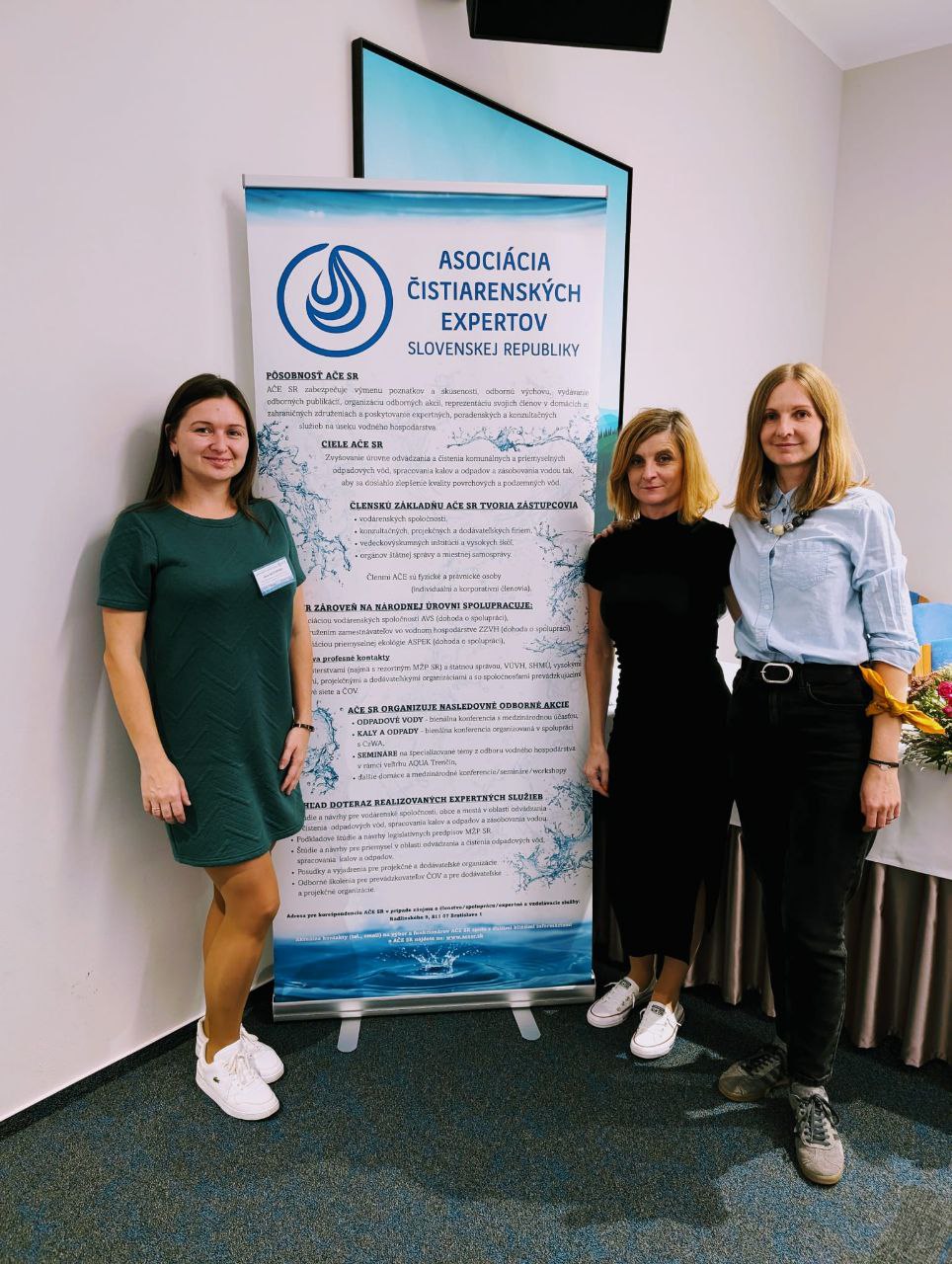
The conference " WASTEWATER 2024" took place from October 16 to 18, 2024, in Štrbské Pleso, High Tatras, Slovakia. Vojs Staňová Andrea successfully presented the methods for removing micropollutants from wastewater. Fedorova Ganna and Sadchenko Alina presented their research in the poster session, focusing on wastewater reuse in aquaculture and agriculture.
The conference provided an excellent opportunity to exchange knowledge with colleagues and establish valuable professional connections. The presented research received positive feedback, confirming the high quality of our group's scientific work.
- Fotogalerie:
- Foto:
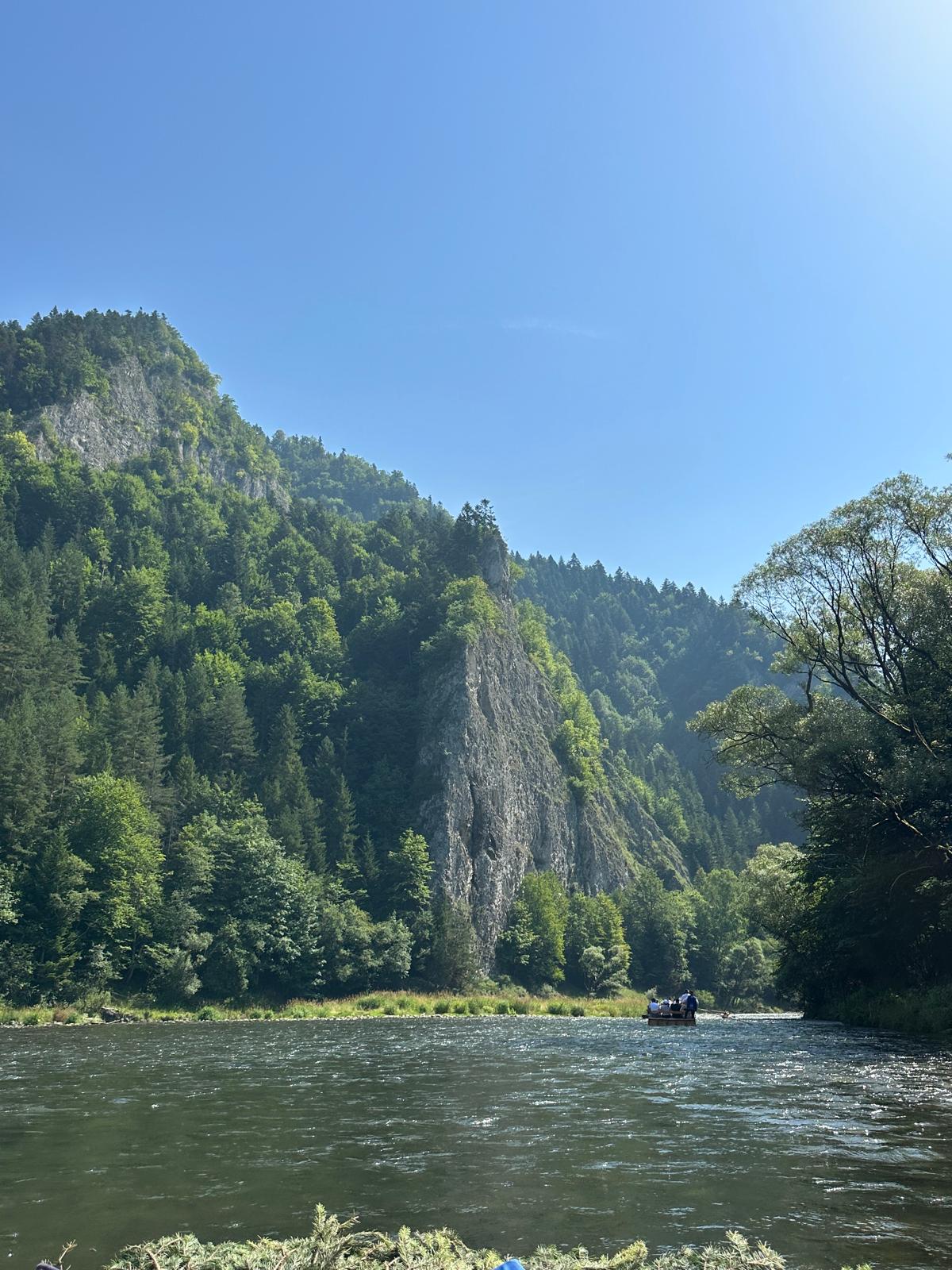
- Foto:

From July 7thto 12th, 2024, the 4th Central European Symposium for Aquatic Macroinvertebrate Research (CESAMIR) was held in Stará Lesná, Slovakia. The symposium brought together over 100 participants from 20 countries and featured 69 oral presentations, four plenary lectures, and 45 poster presentations across various sessions. These sessions covered topics such as diversity, biogeography, invasive species, and conservation.
During the conference, Natalia Szydłowska presented a poster titled "Macroinvertebrates under pressure: Can a Ponto-Caspian invader affect them more than a native?" Her research focused on the diet and feeding preferences of the invasive round goby Neogobius melanostomus (Pallas, 1814) and the native European bullhead Cottus gobio Linnaeus, 1758 in the Ploučnice River, where both species co-occur. Her work earned her the "Best Student Poster Prize" awarded by the Scientific Committee, which included complimentary participation in a scientific training course organized by Physalia.
The symposium was organized by the Plant Science and Biodiversity Centre, Slovak Academy of Sciences. The book of abstracts is available here.








